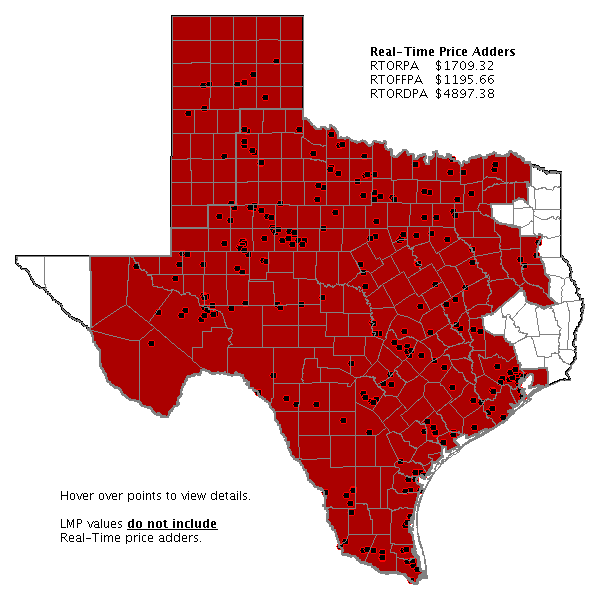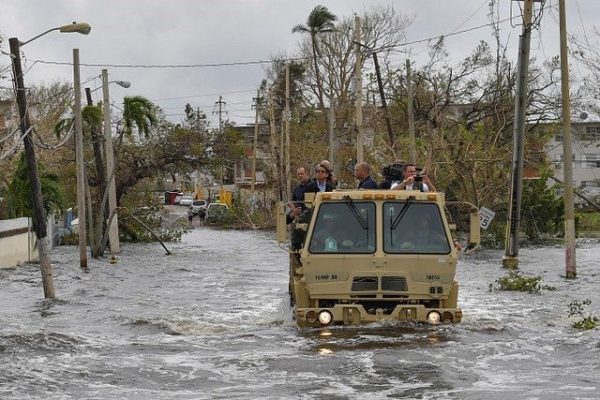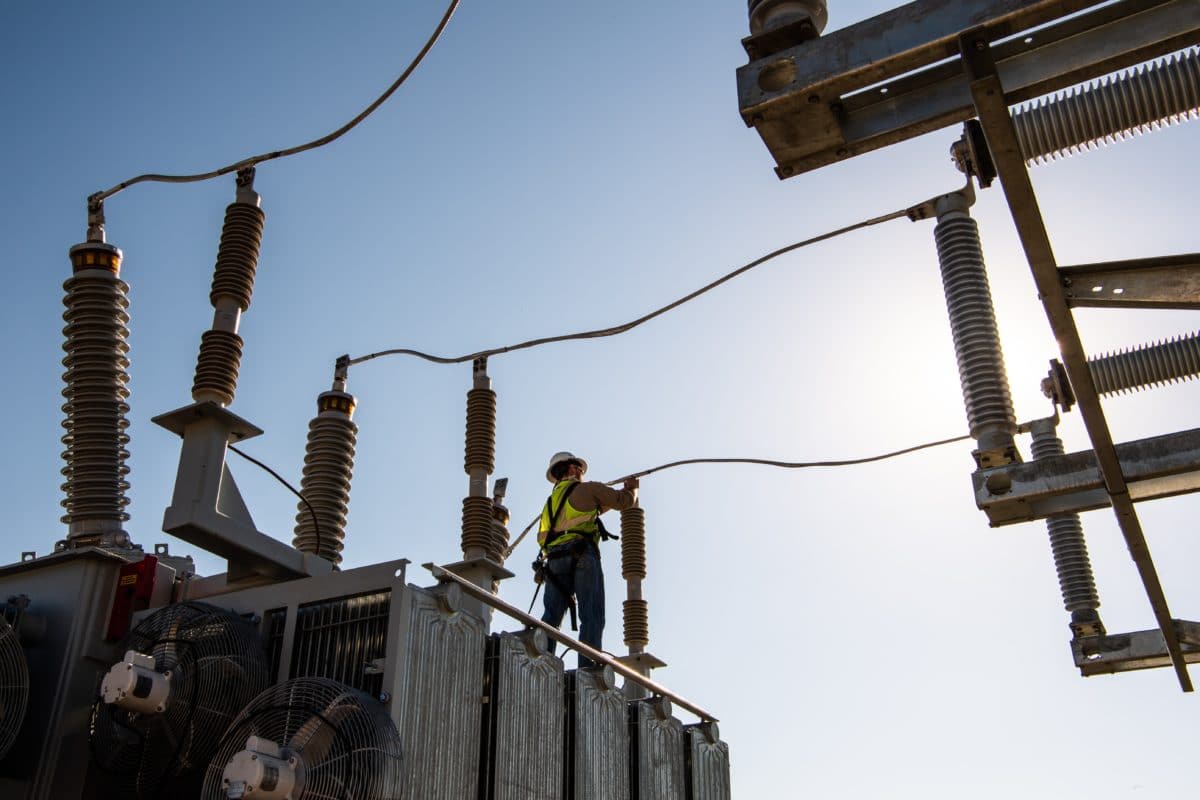Oops. In a Texas-sized error, the Electric Reliability Corporation of Texas (ERCOT) may have charged $16 billion more than it should have for electricity during the mid-February winter storm that knocked out power across much of the state for days.
Potomac Economic, an independent market monitor, said in a letter to state regulators that ERCOT set the price of electricity at the $9,000/MWH maximum, but left that price in place for days longer than necessary. The firm recommended that the pricing be corrected and that $16 billion in charges be reversed.

The letter said that correcting the apparent error would not result in any revenue shortfalls for ERCOT’s generation resources. It said the corrected prices would cover the generator’s as-offered costs and reflect the actual supply, demand, and reserves during the roughly 33 hours from midnight Feb. 18 to 9:00 a.m. Feb. 19.
In a related development, Rayburn Country Electric Cooperative, which meets the wholesale power needs of four rural electric distribution cooperatives in northeast Texas, asked state regulators to order ERCOT to suspend invoicing, billing, and collection of charges related to February’s power outages.
Rayburn said that it and its four members provided service during the storm to 225,000 customers, 90% of whom are residential. It said the charges invoiced by ERCOT “stand to cause Texans financial devastation, with sky-high bills from the basic failure of the energy markets.”
Earlier this week, the ERCOT board fired its CEO, Bill Magness. On his way out, Magness reportedly turned down $800,000 in severance. And earlier in March, Texas Public Utilities Commission Chair DeAnn Walker resigned. She and the commission faced criticism for their handling of the February energy crisis.
Using AI to help harden infrastructure
Researchers at the U.S. Department of Energy’s Argonne National Laboratory are using artificial intelligence (AI) and game theory to develop a model that they said can help decision-makers harden electric infrastructure for resilience.
The model assesses which parts of a network cause the greatest cascades of utility failures when damaged. The insights should lead to better infrastructure design and disaster recovery practices.
In practice, the tool estimates what the researchers called “dependency connections” between utilities. Using the tool, they assessed how failures could cascade across these connections by turning assets on and off and watching what happened.

Image: NYPA
The researchers modeled Puerto Rico’s electricity-dependent water treatment plants, which were impacted by Hurricane Maria in 2017. In a typical treatment plant, electricity flows out of large power plants, across transmission lines, into substations, and then into water treatment plants. If a substation fails, so too would the treatment plants.
The researchers found that by introducing redundancies—for example, by connecting key plants to two substations—utility equipment can remain operable even after partial network disruptions.
They said that redundancy means having more than one critical path in order to reduce the potential to lose power to critical loads, like hospitals and water treatment plants.
Finding system dependencies can also improve restoration decisions immediately after a failure. Those kinds of post-disaster decisions, the researchers said, depend on knowing utility dependencies: Which equipment, if restored, will have the greatest overall net effect? And how can the greatest number of services be restored in the fastest way possible?
VEIR raises $10m for grid-transforming tech
VEIR announced $10 million in Series A financing and debuted a new architecture for high-voltage superconducting transmission lines (HTS) to transform the grid. The investment was led by Breakthrough Energy Ventures, with participation from existing investor Congruent Ventures and new investor The Engine. The financing brings the company’s total funding to date to more than $12 million.
HTS uses smaller transmission lines and better use of existing rights-of-way, but has been hampered from widespread use by higher costs, distance limitations, and overall system complexity. VEIR’s approach is based on a novel cryogenic cooling system for high-voltage superconducting transmission lines. The new capital will allow VEIR to scale its team and begin to develop and test systems required to deploy its product to the transmission grid. VEIR will also use the funding to establish a physical development site in Massachusetts to demonstrate its approach.
The company said its technology enables increasing the amount of power transmitted in a given right-of-way by a factor of five.
RFP for community-based solar
NV Energy issued a request for proposals (RFP) to design, engineer, procure, deliver, and install a 350 kW community-based solar project at a school in North Las Vegas, Nevada. This project will be the first of several community-based solar resource projects developed as part of the Expanded Solar Access Program, which was established by Assembly Bill 465 during the 2018 Nevada Legislative Session. The project will make renewable energy available and create cost savings intended to benefit low-income customers.
The RFP seeks bids to design, engineer, procure, deliver, and install a solar PV system for a commercial operation date on or before Dec. 31. Bids are due by 4 p.m. on March 29. More information may be found here.
Freedom Solar gains partners
Freedom Solar, A Texas-based installer for residential and commercial solar, announced two new equity partners, Genesis Park and GEC. Details were not provided. The new investors, both based in Houston, are expected to help Freedom Solar grow in Texas and Colorado, as well as into other states.
Polysilicon supply deal
Polysilicon maker Daqo New Energy Corp. signed a three-year supply agreement with Wuxi Shangji Automation, an intelligent equipment provider for manufacturing industries including the solar PV industry. Shangji started its mono-wafer manufacturing business in 2019. Under the agreement, Daqo will provide Shangji with 52,700 metric tons of high-purity mono-grade polysilicon between July 2021 and June 2024. Prices will be set monthly according to market conditions. As part of the supply agreement, Shangji will make an advance payment to Daqo New Energy.
This content is protected by copyright and may not be reused. If you want to cooperate with us and would like to reuse some of our content, please contact: editors@pv-magazine.com.









ERCOT and the TPUC should have never let prices go to the $9000/MWh cap. This is to encourage more generation to come on-line. There was no generation that was going to come on-line. It was all either on-line, had weather related outages (frozen whatevers), was out of fuel or would take too long to come on-line. If they would have spent the week before bringing resources up they might could have mitigated the situation.
The extent of the discussion during the ERCOT board meeting the week before was reported by the Austin American Statesman:
Magness spoke about the approaching cold front for about 40 seconds:
“It is actually going to be winter here pretty soon. As those of you in Texas know, we do have a cold front coming this way. We’ll probably see our winter peak later this week or in the very early part of next week. And Operations has issued an operating condition notice just to make sure everyone is up to speed with their winterization and we’re ready for the several days of pretty frigid temperatures to come our way.
“So more on that in the next couple of days, but it does look like we’ll have a little bit of winter weather to contend with during the course of the rest of this week. We do have a cold front coming this way.”
It may no longer be prudent to have every structure’s entire electricity supply relying on external power lines that are susceptible to being crippled by unforeseen events, including storms of unprecedented magnitude. Each building having its own solar-cell-panel power storage/system — at least as an emergency/backup source of power — makes sense. Many Texans may now be realizing this.